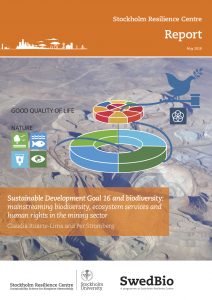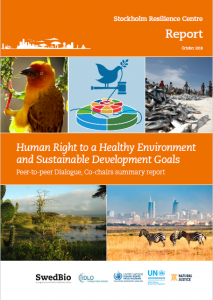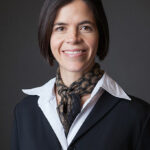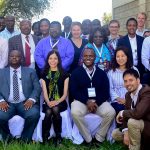Handbook for weaving human rights, SDGs, and the post-2020 global biodiversity framework
This handbook, edited by programme officer Claudia Ituarte-Lima and former SwedBio directorvMaria Schultz, discusses strategies on how to incorporate the human right to a clean and healthy environment with the Sustainable Development Goals (SDGs) and the post-2020 global biodiversity framework with a focus on the Global South.
The authors, from a number of institutions and countries, reveal innovative strategies being used at international, national and local levels to recognize and implement the right to a healthy environment. The global recognition of the human right to a healthy environment would be a significant step in empowering courageous environmental human rights defenders, women and men, youth and children, who are ready to stand-up for human rights and healthy ecosystems.
Building on collective efforts, two complementary strategies are proposed to inform the post-2020 global biodiversity framework: (1) a right to a healthy environment as a stand-alone target, and (2) a rights-based approach incorporated across all targets.
“The authors have provided a useful guide, showing the pathways that could enable humanity to reverse the daunting trends of ecological deterioration, achieve the ambitious Sustainable Development Goals, and leave no-one behind. As the Intergovernmental Panel on Climate Change concluded in its 2018 Special Report, the future of human society depends on our ability to undertake rapid, far-reaching and unprecedented changes at all levels of society. This visionary publication merges law, policy and practice to illustrate, in the context of biodiversity, how we might achieve such transformations.”
David Boyd, UN Special Rapporteur on human rights and the environment, and Associate Professor of Law, Policy, and Sustainability at University of British Columbia.

 Human right to a healthy environment for a thriving Earth
Human right to a healthy environment for a thriving Earth SDG 16 and biodiversity: mainstreaming biodiversity and human rights in the mining sector
SDG 16 and biodiversity: mainstreaming biodiversity and human rights in the mining sector Co-chairs summary report – The Human Right to a Healthy Environment and Sustainable Development Goals Peer-to-peer Dialogue
Co-chairs summary report – The Human Right to a Healthy Environment and Sustainable Development Goals Peer-to-peer Dialogue Private: Claudia Ituarte Lima
Private: Claudia Ituarte Lima Weaving together the human right law, biodiversity and Sustainable Development Goals
Weaving together the human right law, biodiversity and Sustainable Development Goals